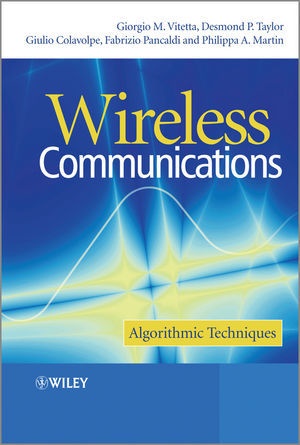Ulteriori informazioni
Informationen zum Autor Giorgio M. Vitetta is a Full Professor of Telecommunications at the Department of Information Engineering of the University of Modena and Reggio Emilia. He received the Dr. Ing. Degree in Electronic Engineering (cum Laude) in 1990 and the Ph. D. degree in 1994, both from the University of Pisa, Italy. Desmond Taylor is the Tait Professor of Communications at the University of Canterbury. He gained his PhD in Electrical Engineering from McMaster University in Canada. He specializes in Digital Communication Systems. He is the director of journals for the IEEE Communications Society. Philippa Martin is a lecturer in Electrical Engineering at the University of Canterbury. Her research interests include coded modulation, error correction coding and decoding, reduced complexity decoding algorithms, iterative processing, space-time coding, detection and decoding, and combined equalization and decoding. Fabrizio Pancaldi received his Dr. Ing. Degree in Electronic Engineering (cum laude) and a Ph. D. degree in 2006, both from the University of Modena and Reggio Emilia, Italy. He is currently a Research Fellow and lectures in Telecommunication Networks. Klappentext This book introduces the theoretical elements at the basis of various classes of algorithms commonly employed in the physical layer (and, in part, in MAC layer) of wireless communications systems. It focuses on single user systems, so ignoring multiple access techniques. Moreover, emphasis is put on single-input single-output (SISO) systems, although some relevant topics about multiple-input multiple-output (MIMO) systems are also illustrated.* Comprehensive wireless specific guide to algorithmic techniques* Provides a detailed analysis of channel equalization and channel coding for wireless applications* Unique conceptual approach focusing in single user systems* Covers algebraic decoding, modulation techniques, channel coding and channel equalisation Zusammenfassung This book introduces the theoretical elements at the basis of various classes of algorithms commonly employed in the physical layer (and, in part, in MAC layer) of wireless communications systems. It focuses on single user systems, so ignoring multiple access techniques. Moreover, emphasis is put on single-input single-output (SISO) systems, although some relevant topics about multiple-input multiple-output (MIMO) systems are also illustrated.* Comprehensive wireless specific guide to algorithmic techniques* Provides a detailed analysis of channel equalization and channel coding for wireless applications* Unique conceptual approach focusing in single user systems* Covers algebraic decoding, modulation techniques, channel coding and channel equalisation Inhaltsverzeichnis Preface xi List of Acronyms xiii 1 Introduction 1 1.1 Structure of a Digital Communication System 3 1.2 Plan of the Book 7 1.3 Further Reading 8 Part I MODULATION AND DETECTION 2 Wireless Channels 11 2.1 Introduction 11 2.2 Mathematical Description of SISO Wireless Channels 16 2.2.1 Input-Output Characterization of a SISO Wireless Channel 16 2.2.2 Statistical Characterization of a SISO Wireless Channel 23 2.2.3 Reduced-Complexity Statistical Models for SISO Channels 36 2.3 Mathematical Description and Modeling of MIMO Wireless Channels 44 2.3.1 Input-Output Characterization of a MIMO Wireless Channel 45 2.3.2 Statistical Characterization of a MIMO Wireless Channel 50 2.3.3 Reduced-Complexity Statistical Modeling of MIMO Channels 57 2.4 Historical Notes 57 2.4.1 Large-Scale Fading Models 58 2.4.2 Small-Scale Fading Models 60 2.5 Further Reading 64 3 Digital Modulation Techniques 65 3.1 Introduction 65 3.2 General Structure of a Digital Modulator 65 3.3 Representati...

